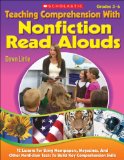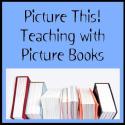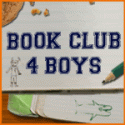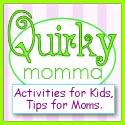This post originally appeared in the current issue of Literacy Lava published by The Book Chook.
Storytelling: The art of creating and sharing a narrative orally or through writing.
 Storytelling has been around for centuries; oral stories were often committed to memory and passed down from generation to generation. Later, people began writing down stories and passing them to the next generation. Storytelling is a fun and quick way to bring literacy front and center in our children’s lives.
Storytelling has been around for centuries; oral stories were often committed to memory and passed down from generation to generation. Later, people began writing down stories and passing them to the next generation. Storytelling is a fun and quick way to bring literacy front and center in our children’s lives.
Benefits of Storytelling
Storytelling can incorporate all components of literacy (listening, speaking, reading, and writing) and is therefore extremely beneficial. According to the National Storytelling Network, “Listening to stories is essential to the development of human imagination, creativity, and abstract thought processes.” Therefore, it is important that children have the opportunity to not only create their own stories, and share them, but to also hear others tell stories. When children have the opportunity to create their own stories, they are using critical thinking skills necessary for advanced reading and writing skills.
Storytelling Around the House
Storytelling with young children doesn’t take much. Children love to tell stories. However, sometimes it is easier for children to have props and other hands-on activities to help prompt them to create a story. Here are a few ways you can use items around your home to guide your children to create stories, both orally or written:
Sensory Writing – Provide an opportunity for your child to sit down and listen to a piece of instrumental music (your choice – classical, contemporary, etc.) As your child listens to the music, encourage him/her to write what he/she feels, thinks, imagines. Encourage him/her to think about what tastes, smells, sights, sounds, and tactile thoughts come to mind when listening.
Grab bags – Get a brown paper bag and fill it with five small items from around your home. Make the items seemingly unrelated (cotton ball, toy car, piece of candy, etc). Give the bag to your child and ask him/her to pull the items out of the bag one by one and use the items to create a story. If you have small children, they may just try to use all of the items in a story without the story making much sense, but if you continue to use this activity sporadically, as they grow older, their stories will begin to become more complex and make more sense.
Picture Box Prompts – Find an old shoe box and decorate the outside of it with magazine pictures, etc. (I used wrapping paper for mine). Then, place old photographs, magazine pictures, and/or pictures from newspapers inside it. If you can, laminate them for longevity. Consider placing headlines and/or specific words from magazines and newspapers as well. Place the box in or around your writing center. Ask your child to pick out three pictures and use the pictures to create a story.
Wordless picture books – Wordless picture books are fantastic resources to have children tell stories. Share a wordless picture book with your child and have him/her orally tell the story or write his/her own version of the story.
Presenting the Stories
Every story teller needs an audience. After your child has written a story, provide an opportunity for him/her to share it with the family. Perhaps, once a month, enact a Story Telling Night where each member of the family either orally recites a story that he/she has created or reads aloud a story that he/she has written.
Storytelling provides children the opportunity to use critical thinking skills to create; and to hone their writing and speaking abilities. If we teach children to become intentional story tellers when they are young, the benefits will be amazing!
©2011 by Dawn Little for Literacy Toolbox. All Amazon links are affiliate links and may result in my receiving a small commission. This is at no additional cost to you.








